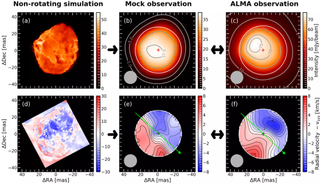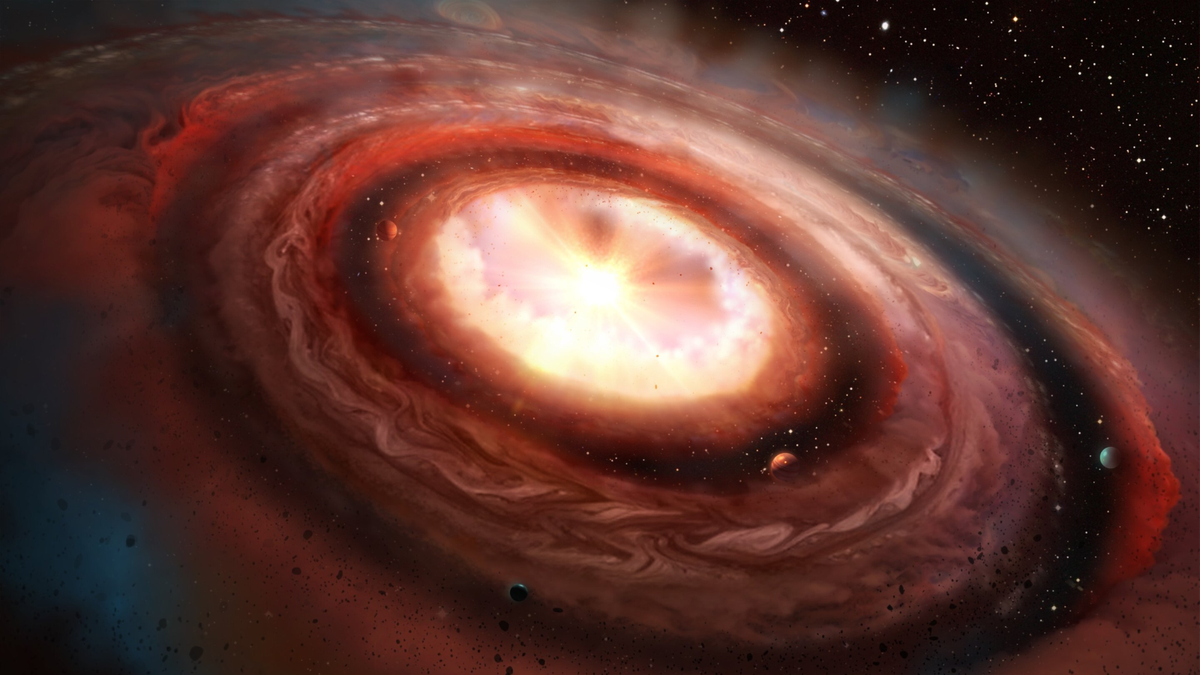Recent observations of Betelgeuse, a star located in the constellation Orion, have created a mystery about the red supergiant. They suggest it is spinning much faster than a star its size should be able to.
Now, a team from the Max Planck Institute for Astrophysics, led by Ph.D. student Jing-Ze Ma, may have an explanation for why Betelgeuse appears to be spinning so utterly fast. Perhaps, the researchers say, it’s actually an illusion created by the star’s violently boiling surface.
Ma and colleagues think the star’s bubbling surface could be mistaken for rotation — even by the most advanced telescopes. This mistake could lead to observers believing Betelgeuse, which is located between 500 to 600 light-years from Earth, appears to be rotating faster than should be possible for a star of such enormity.
“For most people, stars are just glowing dots in the sky. Our results highlight again that stars like Betelgeuse have such drastic boiling motions on the surface that we can see those motions in action in the telescopes,” Ma told Space.com “As theorists, we are very excited that we can actually make predictions from our simulations that will be tested against observations in years to come.”
Related: Betelgeuse may be the result of a ‘quiet’ star merger
Betelgeuse is an infamous red supergiant star that recently made headlines when its dimming led scientists to speculate that it may be about to explode.
“Most stars are just tiny points of light in the night sky. Betelgeuse is so incredibly large and nearby that, with the very best telescopes, it is one of the very few stars where we actually observe and study its boiling surface,” Selma de Mink,
research coauthor and director at the Max Planck Institute for Astrophysics said in a statement. “It still feels a bit like a science fiction movie, as if we have traveled there to see it up close. And the results are so exciting.”
Betelgeuse, Betelgeuse, Betelgeuse!
Betelgeuse is one of the brightest stars in the Northern Hemisphere over Earth, meaning it is well-studied for study — but, as observations of its dimming show, that doesn’t mean it isn’t capable of delivering surprises.
With a diameter greater than 620 million miles (1 billion kilometers), Betelgeuse is over 1,000 times larger than the sun, making it one of the largest stars in the known universe. If the sun and Betelgeuse were swapped, and the red supergiant was placed at the heart of the solar system, it would engulf Mercury, Venus, Earth, and Mars, with its atmosphere extending all the way out to the orbit of Jupiter.
Such massive stars are expected to have relatively sedate rotation speeds. This is because when stars “puff out” and expand during their red giant phase, the conservation of angular momentum suggests their rotation should slow. This is similar to an ice skater on Earth lowering and spreading out their arms to slow down their spins.
Yet, recent observations of Betelgeuse, particularly those made with the Atacama Large Millimeter/submillimeter Array (ALMA) located in Northern Chile, showed that Betelgeuse is rotating at around 11,200 miles per hour (5 kilometers per second). That’s around eight times as fast as a Jet Fighter.

An investigation with ALMA, an observatory comprised of 66 radio antennas that together form a single telescope, revealed that while half of Betelgeuse appears to be approaching Earth, the other appears to be receding. It was this so-called “dipolar radial velocity map” on the outer layer of Betelgeuse that scientists interpreted as rapid rotation.
This interpretation hinges on Betelgeuse being considered a perfectly round sphere, however — and this isn’t the case, the new study’s researchers point out. The surface of the red supergiant star is turbulent with boiling bubbles. Some of those bubbles, in fact, are as large as Earth’s entire orbit around the sun. These bubbles, powered by a heat-transfer mechanism called convection, can rise and fall at speeds as great as 67,000 mph (30 km/s), around three times as fast as the Orion Spacecraft, the crew vehicle of the Artemis mission.
To analyze this precise, bubbly picture of Betelgeuse, the team developed a new post-processing computer package to simulate synthetic ALMA images and compare them with 3D radiation hydrodynamic simulations of nonrotating red supergiant stars. This revealed that a cluster of boiling bubbles rising on one side of Betelgeuse as another cluster falls on the other would create a dipolar radial velocity map. This convection would be blurred in actual ALMA observations, the team says, making it indistinguishable from rapid rotation.
In fact, the crew found that in around 90% of their simulations, Betelgeuse would be interpreted as rotating at tens of thousands of miles per hour because of this large-scale boiling on the red supergiant’s surface. Should the team’s modeling be wrong, however, there may be other explanations. For instance, it could indicate the red supergiant star engaged in some stellar cannibalism long ago.
“If Betelgeuse is rapidly rotating after all, then we think it must have been spun up after eating a small companion star that was orbiting it,” de Mink added.
The team will now use further observations of Betelgeuse to assess its rotational speed and better understand how its boiling surface affects such measurements, thus putting their model to the test.
“There is so much we still don’t understand about gigantic boiling stars like Betelgeuse. How do they really work? How do they lose mass? What molecules can form in their outflows? Why did Betelgeuse suddenly get less bright?” Andrea Chiavassa, research co-author and CNRS astronomer, said. “We are working very hard to make our computer simulations better and better, but we really need the incredible data from telescopes like ALMA.”
The team’s research was published in February in the Astrophysical Journal Letters.



